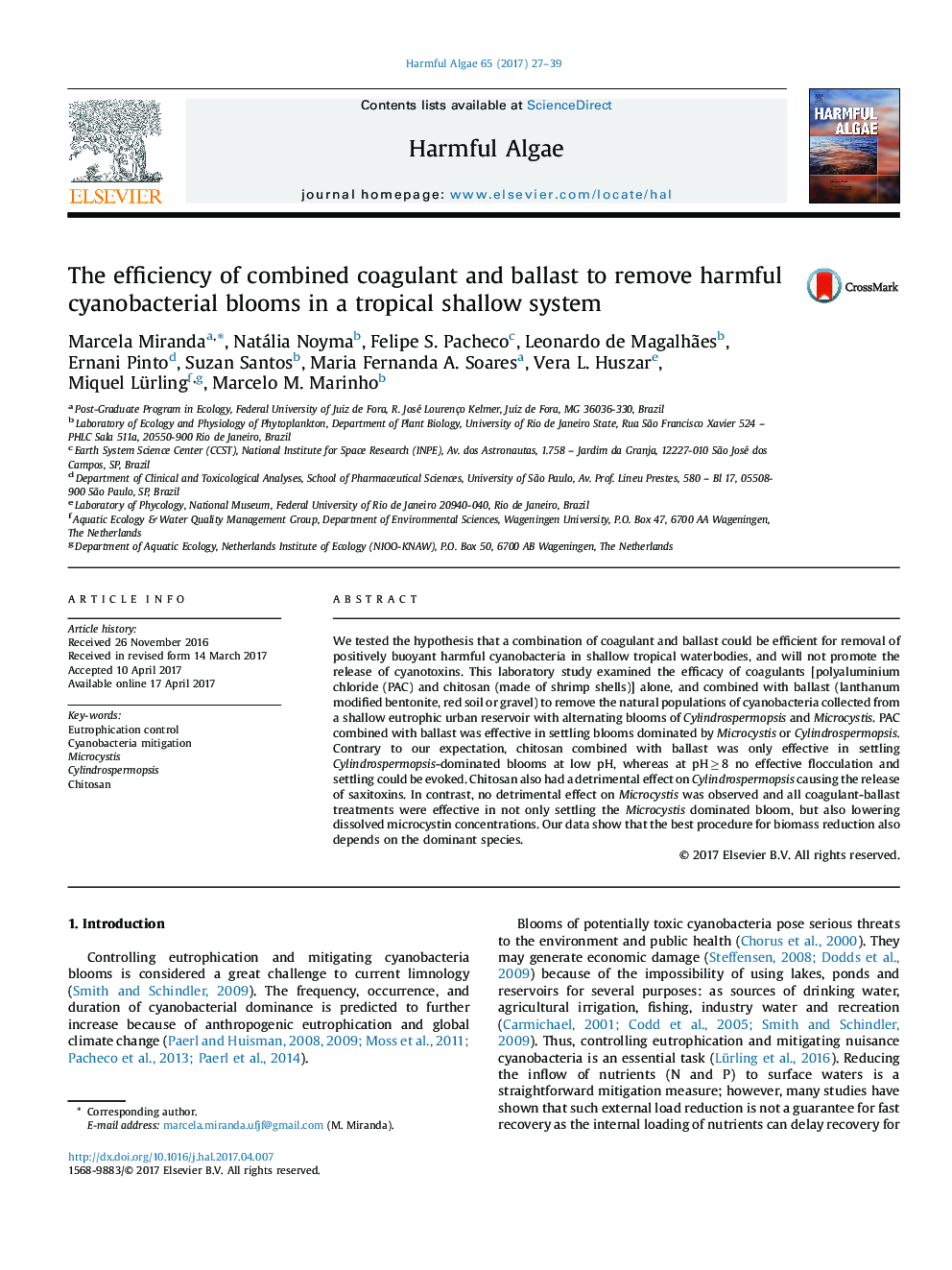| کد مقاله | کد نشریه | سال انتشار | مقاله انگلیسی | نسخه تمام متن |
|---|---|---|---|---|
| 5765730 | 1626907 | 2017 | 13 صفحه PDF | دانلود رایگان |
- Coagulant and ballast is a promising technique for cyanobacteria mitigation.
- Chitosan is efficient in flocking positively buoyant blooms of Microcystis sp.
- Chitosan affects Cylindrospermopsis filaments causing release of saxitoxins.
- Ballast compounds combined with coagulants removed extra-cellular microcystins.
- The best combination of coagulant and ballast for biomass removal depends on the dominant species.
We tested the hypothesis that a combination of coagulant and ballast could be efficient for removal of positively buoyant harmful cyanobacteria in shallow tropical waterbodies, and will not promote the release of cyanotoxins. This laboratory study examined the efficacy of coagulants [polyaluminium chloride (PAC) and chitosan (made of shrimp shells)] alone, and combined with ballast (lanthanum modified bentonite, red soil or gravel) to remove the natural populations of cyanobacteria collected from a shallow eutrophic urban reservoir with alternating blooms of Cylindrospermopsis and Microcystis. PAC combined with ballast was effective in settling blooms dominated by Microcystis or Cylindrospermopsis. Contrary to our expectation, chitosan combined with ballast was only effective in settling Cylindrospermopsis-dominated blooms at low pH, whereas at pH â¥Â 8 no effective flocculation and settling could be evoked. Chitosan also had a detrimental effect on Cylindrospermopsis causing the release of saxitoxins. In contrast, no detrimental effect on Microcystis was observed and all coagulant-ballast treatments were effective in not only settling the Microcystis dominated bloom, but also lowering dissolved microcystin concentrations. Our data show that the best procedure for biomass reduction also depends on the dominant species.
163
Journal: Harmful Algae - Volume 65, May 2017, Pages 27-39
